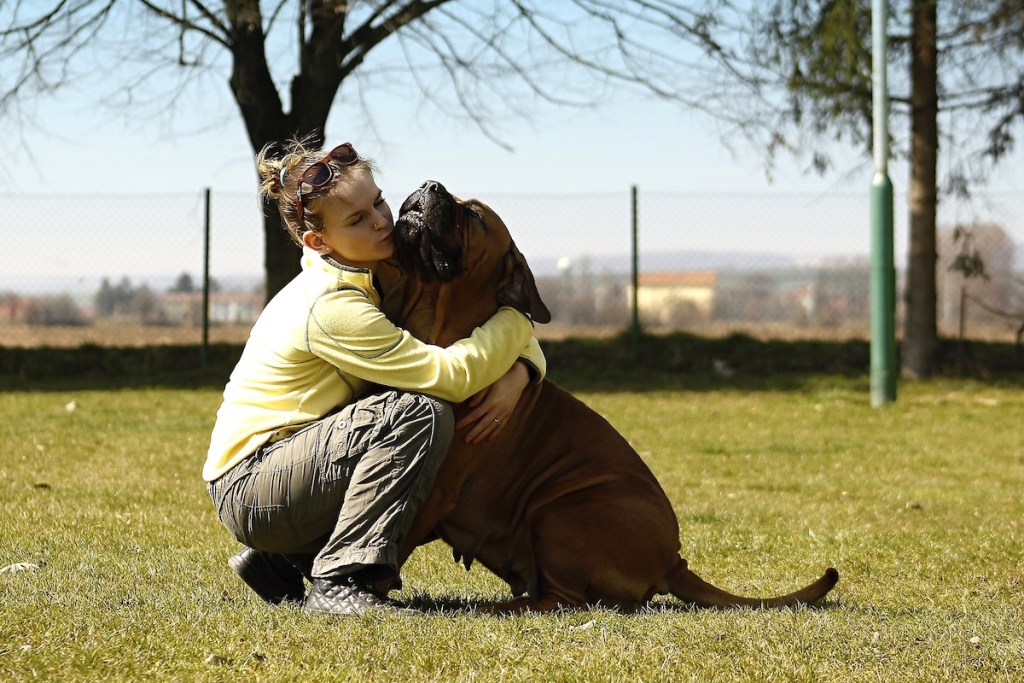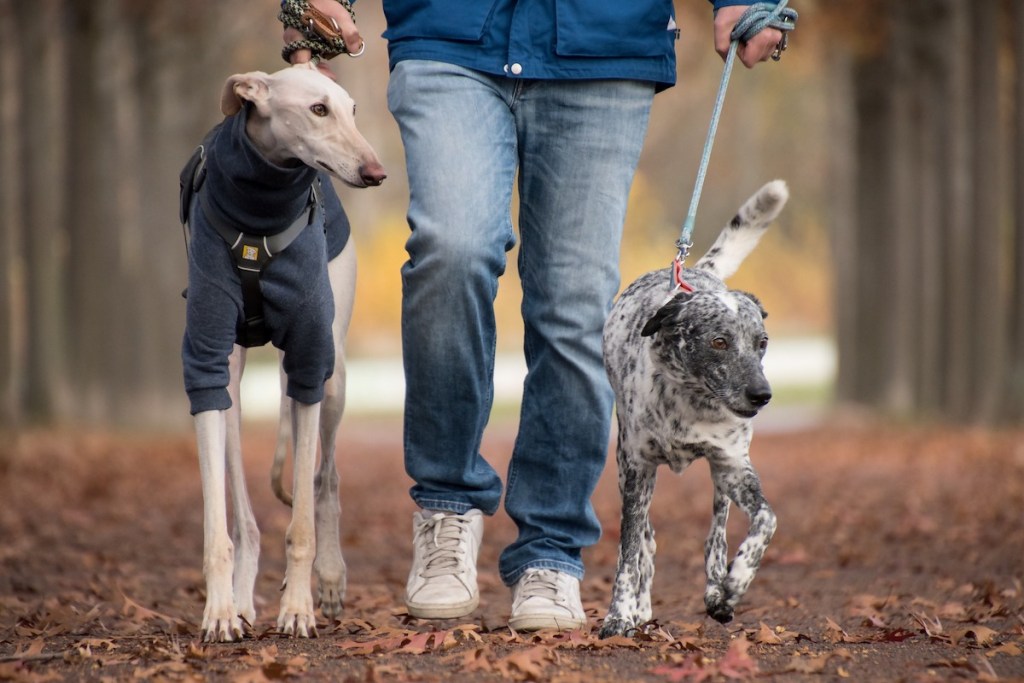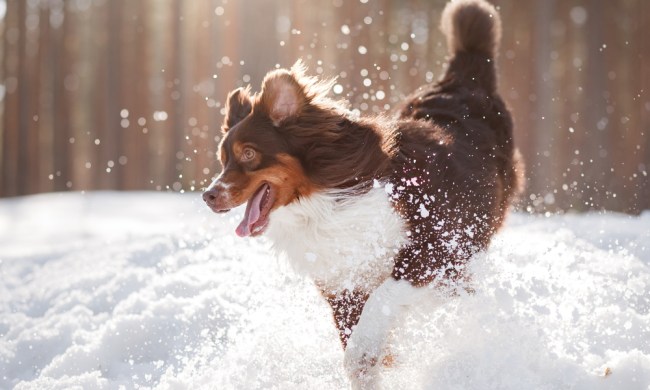While all dogs need careful training, a gentle giant can be particularly unwieldy if left to his own devices. That’s why obedience training is key to making sure your dog stays safe. A well-trained dog will keep everyone in the family happy. Big dogs have lots of energy, and many enjoy both work and play. With the right training methods, you can have a good time while helping him pick up the skills needed for a happy home. Here are a few tips on how to train a large dog.

Reward good behavior
Remember to think positive while training your big dog. We know how hard this is when your 80-pounder leaps on you or crushes your favorite dish, but it helps to remember that he doesn’t really understand why you don’t want him crashing into everything. Your good vibes will rub off on him, and it’s easier for him to stay focused if you’re not yelling at him or showing frustration.
Big dogs love their treats, and you can dole them out liberally throughout the training process. Look into training treats that are small and low calorie to avoid ruining his dinner. Some owners also find click training beneficial. Since it’s easy to tie the rewarding sound immediately to his actions, it can speed up the process of teaching him. You should also give your big dog loads of praise when he responds to your command. Your dog loves you most, and praise goes a long way toward getting your dog to listen and repeat the task.
Redirect bad behavior
Just like a little kid, dogs crave attention and will leap at the opportunity to remind you that they’re there. Sometimes we accidentally reward bad behavior in our pups just by giving them the attention they crave. Of course, lots of bad behavior needs to be corrected, but a few things like jumping and some barking should be simply ignored. Practice with the other members of your family not to pay attention to Fido when he’s being a nuisance on purpose and help them understand his different vocalizations. It’s important that both you and your pooch know the difference between warning you of an intruder and barking at a blowing leaf. Of course, any truly concerning behaviors should be discussed with your vet or other behavioral professional.

Walk them on a lead
One of the most difficult parts of training a large dog is leash training. Dogs, especially big ones, need a lot of exercise, and when you go out, it may seem like they’re walking you. Treats can help motivate them, but sticking to a routine will be the key. If you’re using click training for other obedience tasks, you should try to do something similar on your walks. Make sure your dog and small children are both truly ready before handing them the leash, or you may end up with skinned knees and a runaway pup.
We recommend a short, nonretractable leash at first while he’s in the early phase of learning before you move on to giving him more freedom. A harness may help keep him under control in the beginning and can be more comfortable for a large pup. Some working breeds will need multiple walks per day when they’re younger, and getting out that energy will improve his mood and behavior. Walks also give you ample opportunity to practice.
Seek out agility training
Part of what you’re teaching him, especially as he grows up, is to understand his own size. In addition to obedience training, many large dogs enjoy agility training or other similar activities. Besides teaching him cute tricks, you’ll be helping him get a feel for his large body and giving him more self-control. Many dogs need to have the basics down before they can advance to this level, so ensure he can sit and stay before enrolling him.
No matter what level of training your pet is on, help is always available to speed him along. Remember, obedience classes aren’t just for your pup — they’re for you, too. Even if you have experience, you and your large dog need to get to know each other and practice working together. With the right regimen, you’ll have your pet coming when you call in no time.



